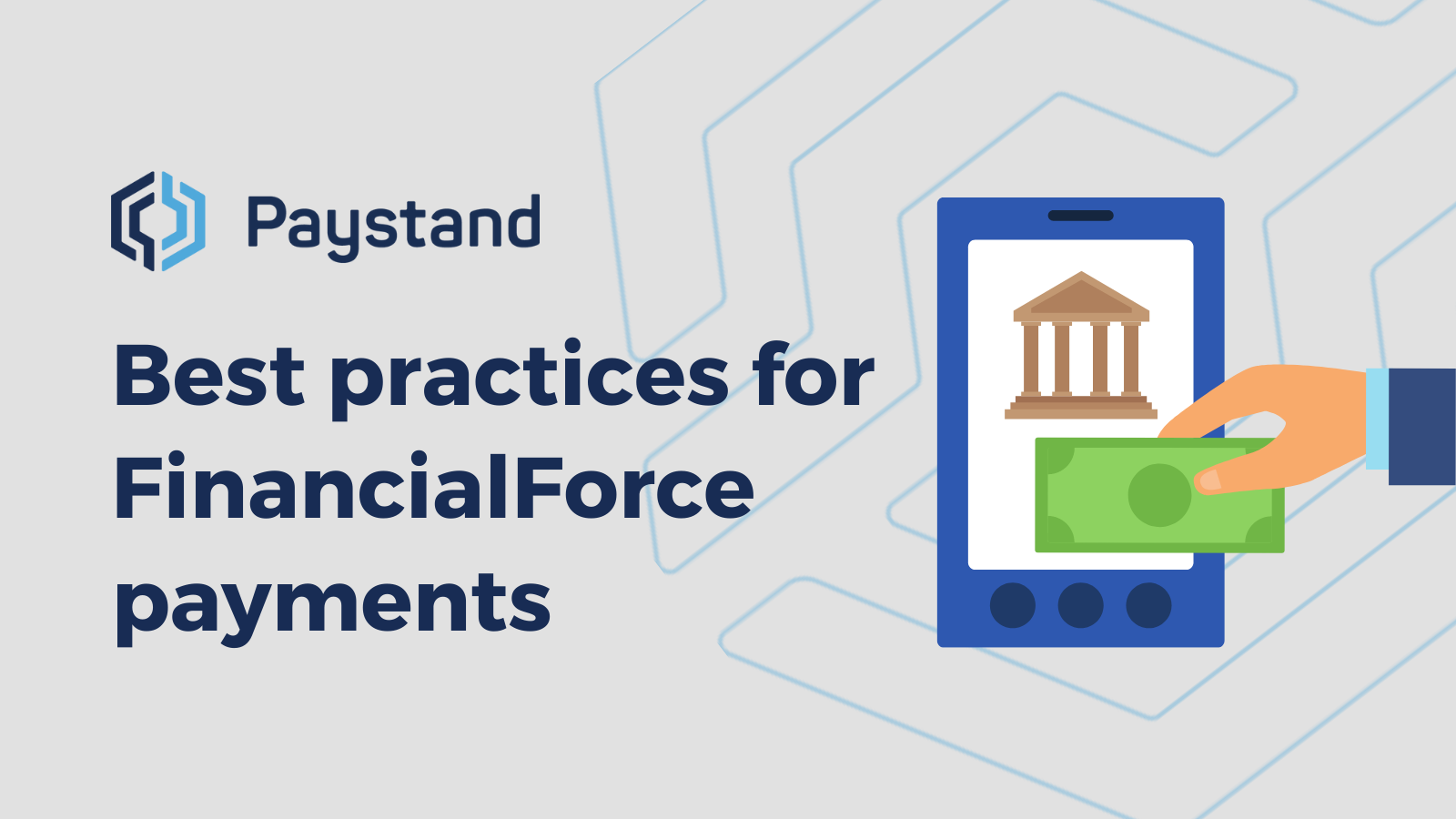Best practices for FinancialForce payments

As a popular cloud billing platform, the FinancialForce ERP is a fairly intuitive online invoicing software. And for a good reason. The learning curve is fairly low for anyone coming from the Salesforce CRM.
A cloud billing leader, the FinancialForce ERP provides various tools from invoicing to cash flow management. But just like with any other financial management platform, there's more to an ERP besides invoicing. And let's face it, the last thing any accounts receivable professional wants is to enter data manually. And they shouldn't have to.
Keep reading to get the most out of your FinancialForce billing platform.
6 best practices for FinancialForce payments
So, you know how to send and schedule invoices through FinancialForce Billing Central. Now what?
Implementing the following best practices for FinancialForce payments can help streamline accounting tasks and free up time for accounts receivable professionals.
1. Keep a customer master record
First and foremost, it's critical to keep a customer master record. Not only does it make organization and analyzing data easier, but this approach better connects invoicing to sales. For both sales teams and accounts receivable, it becomes a cinch to access customer data, whether you need to follow up on a payment or upsell a new product line. In the long run, it just makes things easier. And given the fact FinancialForce is owned by the Salesforce platform, all the tools are there to link accounting processes to their stellar CRM.
2. Streamline compliance
Next on the list: Make sure your simple invoicing software is compliant. While FinancialForce comes with a number of security and compliance features. The FinancialForce ERP has inbuild ASC 606 compliance that links revenue recognition with customer data. At the same time, it's critical that every invoice include the correct payment terms and includes essential information, such as the company's number VAT/GST.
3. Evaluate customer data
One of the many benefits of FinancialForce accounting is increased visibility. Using the information stored in your digital ERP makes it fast and easy to compile financial reports and understand your specific billing cycle. And since FinancialForce is one of the leading cloud billing solutions, an accounts receivable professional can access this data at the office, at home, or anywhere there is an internet connection.
4. Design a seamless customer experience
One of the benefits of billing software is the ability to create a better customer experience. Your customer gets their invoice immediately, they can save the email or PDF for their reference, and they can promptly send payments. The ability to set up subscriptions and reoccurring billing from this accounting software provides additional options to streamline the process for both the AR team and their customers.
Making use of scheduled payments, or even adding an automation integration to your FinancialForce billing process, can create an even better customer experience.
5. Provide electronic payment options
When you invoice electronically, you can also prompt electronic payments with the push of a button. With the right payments integration, AR teams can defuse cash flow bottlenecks through bank-to-bank transfers, ACH, e-check, and credit card billing options with the right payments integration. Some solutions also allow customers to save their billing details for efficient future payments.
6. Establish automated billing processes
Finally, it's essential to automate as much as possible. Not only does automation prevent potential mistakes and lost invoices, which contributes to maintaining compliance, but it significantly reduces the time and resources needed to deal with manual tasks. A FinancialForce accounting integration should be able to register sent invoices, receive payments, and transfer that data back to the billing management software in real-time. Combined with the invoice scheduler, labor-intensive tasks take only a few hours instead of days.
Designing a better billing strategy
Outside of following these best practices for FinancialForce accounting, the best way to guarantee streamlined cash flow is to have a solid payments strategy. Automation and electronic B2B Payments are great, but there are still savings to be made.
We can't speak for every single FinancialForce integration, but at Paystand, we offer several features that give an extra boost to your automated billing processes.
Take credit card processing fees. They are a hassle for companies, and they do more than nibble at your revenue stream. With a simple invoicing software that includes an online billing portal, AR professionals can shift this processing fee onto customers as a convenience fee.
This does two things. First, if they still want to pay with their card, they can. But your team doesn't have to worry about the fee. And let's face it, 2.5% of a $1,000 payment is actually quite a lot, let alone a $10,000 payment. Secondly, this can encourage consumers to fill their invoices through an ACH or eCheck payment, both of which are more secure and faster than credit card payments. You can also choose to take on certain fees, such as the lower bank transfer fee, to further incentivize this payment method. We call this "Zero-fee".
Providing multiple electronic payment methods, offering an autopay option, setting up reoccurring payments, and customizing your FinancialForce integration can help you build stronger financial management and billing strategy.
Give your FinancialForce solution a turbo boost
Paystand is on a mission to make ERPs more efficient. And while FinancialForce is a powerful but simple invoicing software, it can do so much more. To learn how Paystand can help your AR team master automated billing processes, book a demo with us today.





